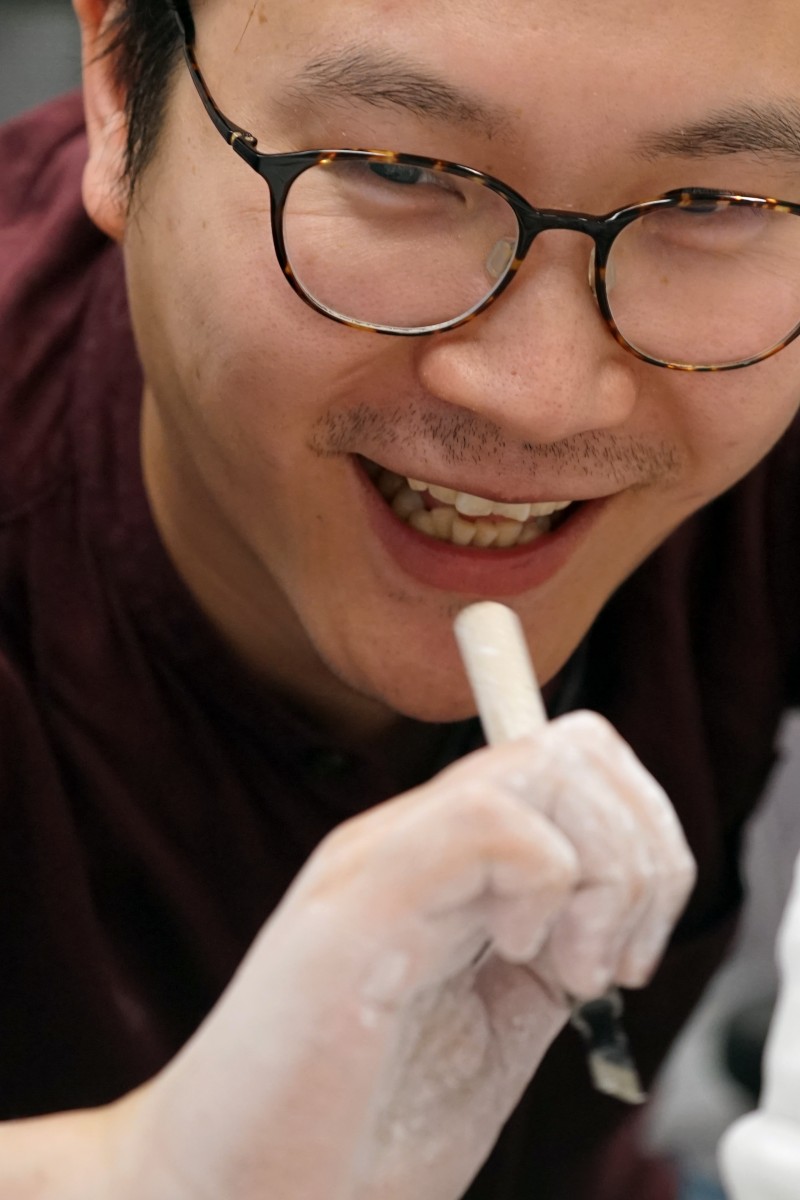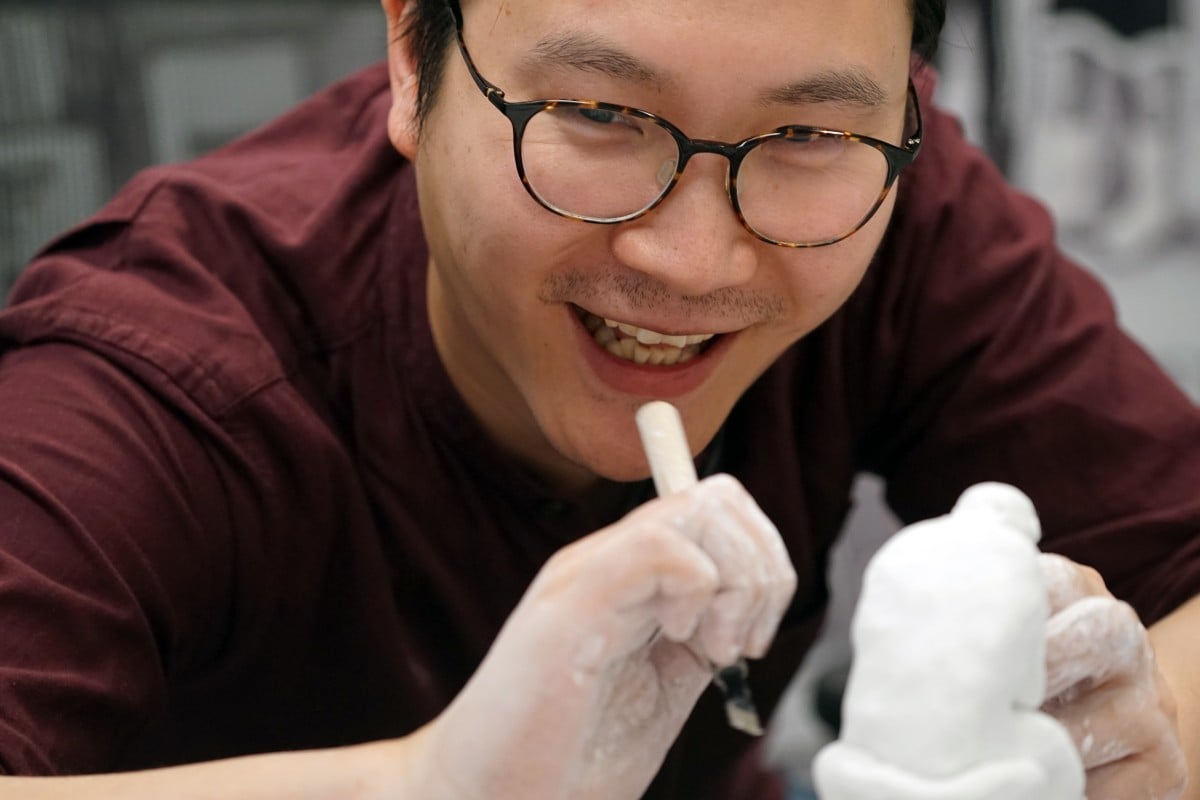
In the second column of our new YP Nails It series, editor Jamie Lam puts his skills to the test trying to piece together this French masterpiece
 Special Projects Editor Jamie Lam attempts to recreate a famous masterpiece.
Special Projects Editor Jamie Lam attempts to recreate a famous masterpiece.Every Wednesday in Young Post’s holiday pagination, the team will attempt to recreate a famous piece of art from different genres to the best of their ability. For today’s YP Nails It, our Special Projects Editor Jamie Lam attempted to recreate French artist Auguste Rodin’s timeless sculpture, The Thinker.
Rodin was a French artist who worked prolifically in the late 19th and early 20th century. The world-famous Thinker sculpture was originally part of a larger design for a pair of bronze doors called the Gates of Hell. The colossal work was based on an epic poem called Inferno by Italian poet Dante Alighieri, which depicts a fictional journey through the nine circles of Hell.
Although the bronze doors were never fully completed, the sculpture that was to become The Thinker was put on display by itself at different exhibitions and became very popular. It depicts a muscular man sitting on a pedestal, deep in thought.
YP Nails It! Amateur artist tries drawing manga
His brows are furrowed in concentration, and his head rests at an angle on one clenched fist beneath his chin. His entire body seems to be coiled tight with the effort of trying to figure something out, and even his toes seem to be giving off a sense of tension. The powerful emotion that emanates from the inanimate object can be felt even by those who know nothing about art.
Someone like me.
Yet it was also I who was tasked with making a copy of The Thinker using nothing more than paper clay, some rudimentary sculpting tools, and a photo of the original work. For the record, I have never worked with paper clay before, nor have I ever taken sculpture lessons. However, I did take some pottery lessons when I was in secondary school, and have created beginner works such as a wonky cup and a leaky bowl.
My first thought when I was presented with the materials was: How am I supposed to make a three-dimensional object out of a two-dimensional picture? I have no idea what the back of this sculpture looks like.
When I pointed this out to our videographer, he said: “Don’t worry. Even if you had it, you don’t know how to sculpt, so it would still be bad.”
A great point. I tore open the packet of paper clay and softened it with a few drops of water. It soon became very pliable. I decided to make the base pedestal part first because it seemed to be easier. Uh oh. I had added too much water and now the clay was a mushy mess that had no form. I had to resort to adding more of the dry clay to balance out the moisture.
I realised too late that I had used up too much clay for the base, and didn’t have enough for the actual man. It was going to have to be The Disproportionately-Small-For-His-Pedestal Thinker, I guess.
What is creativity? Experts weigh in
I started on the legs next. It was surprisingly difficult to mould them into anything that resembled human limbs. In the end, I had to be settle for a pair of frog-like legs that were definitely not the same length.
My videographer then reminded me that I had to use the tools “for the camera”. I made some half-hearted attempts to carve some toes into the ends of my amphibian legs and moved onto the torso and body next.
This part was relatively easy, as I just tore off a rectangular block of clay and slimmed down one end for the waist. A couple of drops of water later, and it was attached to the legs. The arms were next. Because I was so unsuccessful with the toes, I didn’t bother to try to make any individual fingers. Although the clenched fist under the chin was one of the defining parts of the original Thinker, the right arm of my masterpiece remained a shapeless blob.
Local artist with Tourette's syndrome creates her own style of art
Now for the hardest part of the whole exercise: forming the head and expression of concentration on the face. I successfully attached an oblong-shaped ball to the top of the body, but it had no facial features. I fashioned a nose and smushed it onto his face. Two malformed ears were added next, and a rudimentary grimace was added with a pointy tool. I also tried to add a proper hairline, but failed horribly and ended up looking like a type of hat that was fused to the head.
I suppose the end product was still recognisable as Rodin’s The Thinker, but it would not be winning any amateur art competitions any time soon. When I showed my masterpiece to one of my colleagues, she laughed for a full five minutes then gave me a “Good try”.
I had learned something very important in the process, though. Making a realistic sculpture requires real skill, great patience, and an awareness of the overall piece you want to end up with. Putting it together in a piecemeal fashion can only end in disaster, and having a detailed plan at the start is the key to success.
